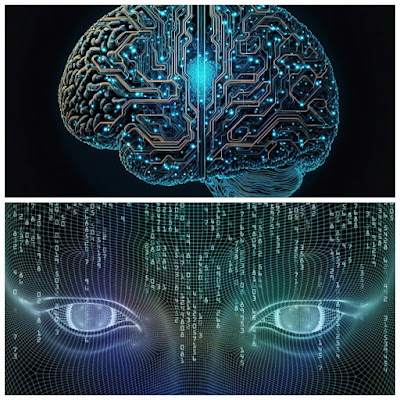Artificial Intelligence (AI): What is it? How does it work?
Artificial Intelligence (AI) algorithms continue to shape and influence our world at full speed. The integration of AI has transformed our world into a fully online environment, laying the foundations for the future.
AI is a scientific discipline focused on enabling computer systems to perform tasks resembling human intelligence. A concise definition for AI is systems that mimic human intelligence, performing tasks similar to those done by humans and capable of learning from human experiences and adapting to them.
What is Artificial Intelligence?
In its simplest form, Artificial Intelligence is defined as systems that mimic human intelligence to perform specific tasks and improve themselves by iterating over the collected information. The distinguishing feature setting AI apart from current technology systems is its ability to mimic human intelligence.
Objective of Artificial Intelligence!
The fundamental objective of AI is to equip computer systems with human-like thinking abilities to enhance their effectiveness in performing tasks. In other words, it involves designing computers that encompass processes requiring various forms of intelligence, such as learning, planning, language understanding, image recognition, and decision-making.
Commercial organizations and companies adopt AI with the purpose of utilizing it in various areas, depending on the sector, ranging from customer services to supply chain management.
History of Artificial Intelligence
Many researchers and historians point to the "Dartmouth Conference" held in 1956 as the modern starting point for artificial intelligence. John McCarthy, Marvin Minsky, and Claude Shannon defined AI as the "science of making intelligent machines, especially intelligent computer programs." The term "artificial intelligence" proposed in 1956 has become more popular in recent times due to advancements in science and technology, such as increased data volumes and improvements in algorithms and computations. Early AI research focused on problem-solving and symbolic methods. Later, with the development of machine learning, AI evolved and continues to progress today with deep learning, enabling tasks like speech recognition, image processing, and data predictions.
Significance of Artificial Intelligence (AI)
The importance of AI has increased with the contribution of machines that can perform tasks requiring human intelligence and computers demonstrating "intelligent behavior" observed in human existence.
For commercial organizations today, leveraging data through AI allows for optimal utilization. AI analyzes vast and deep datasets using neural networks with multiple layers, making the analysis results generated by AI with these deep neural networks highly robust and reliable. AI algorithms, learning autonomously, can easily evaluate unique datasets. Additionally, Natural Language Processing (NLP) is a branch of AI that enables machines to understand and generate human language.
How Does Artificial Intelligence Work?
Artificial Intelligence processes vast amounts of data by combining smart algorithms and iterative processing. During this process, patterns or features of the processed data allow AI to learn automatically.
AI operates with various functions through different methods and technologies. These methods and technologies can be summarized as follows:
Machine Learning: A crucial aspect of various branches of AI. Machine learning involves developing algorithms and statistical models for computer systems to perform complex tasks without explicit instructions.
Artificial Neural Networks: Through AI, artificial neural networks respond to external inputs, processing information and comprising units with interconnecting information transfer. This involves a type of machine learning process called deep learning, which uses layered structures resembling the human brain.
Deep Learning Technology: This technology employs deep neural networks to learn and extract complex patterns from large datasets. AI utilizes advanced computation and training techniques to learn intricate models from numerous data units in this process, employing large neural networks with multiple processing unit layers.
Cognitive Computing: This system enables AI to transfer human-like interaction to machines. Cognitive computing, resembling another intelligent branch of AI, mimics the human thought process by using algorithms and data to make decisions, predictions, and analyses.
Advanced Algorithms: Algorithms are a vital component of AI, creating programs to give machine-like features. This system allows AI to analyze more data faster and at multiple levels. Additionally, advanced algorithms are used to understand, define, and optimize complex systems and rare scenarios.
Graphics Processing Units: Graphics processing units provide the computational power necessary for AI to perform iterative processing, facilitating the training of neural networks.
In Conclusion!
This technology has the potential to optimize processes, increase efficiency, and develop new solutions in various sectors such as healthcare, finance, automotive, and education. However, it also brings challenges such as ethical concerns, privacy issues, and workforce changes. Artificial Intelligence (AI) is a dynamically evolving scientific field aiming to imbue computer systems with intelligence, and it is expected to have significant impacts on various industries in the future.
You may like our;
.jpg)
%202.jpg)
%201.jpg)







